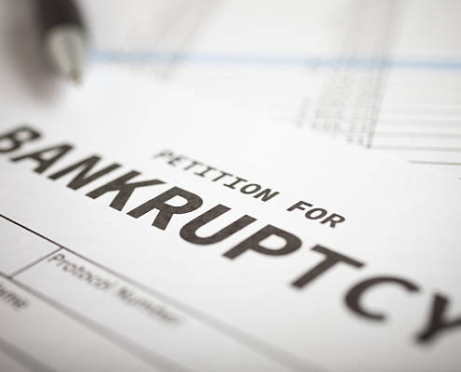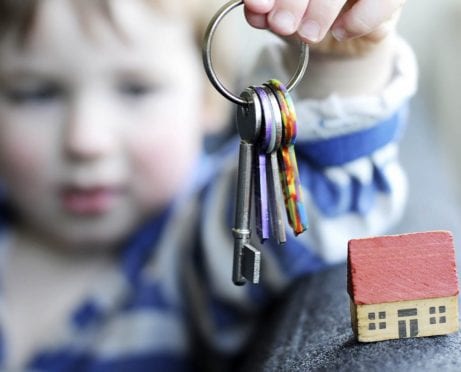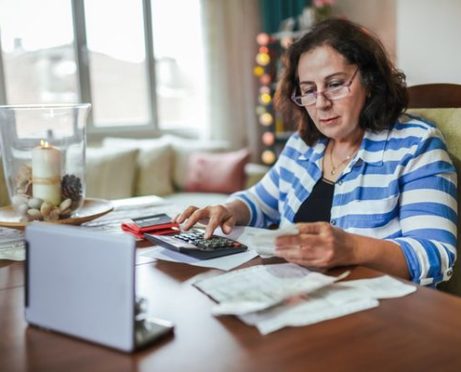
Getting out of debt is not the final goal, it's only the beginning.

When you’re in debt, paying it off for good seems nearly impossible. But for some of us, that’s just what we’ve done.
Back in 2012 I paid off $14,000 of consumer debt in just over a year. It was no easy feat since I was allocating over one third of my income towards debt payments. Now, several years later, I find myself back in debt again and facing some hard truths.
Struggling to Pay Off Your Debt? Talk to a Professional Today for a Free Consultation >>
Admit You Were Crash Dieting
The way I paid off my debts was like going on a crash diet. I did whatever I could to reach my “goal weight” but once I started spending regularly again, the debt came back. I didn’t create any new long-term habits, I simply deprived myself for 14 months in order to reach a specific goal.
If you’re back in debt, look at the strategy you used to become debt-free. Perhaps you focused too much on the result and not enough on creating long-term lifestyle changes.
Admit you crash dieted and then be open to a new mindset. Start creating new spending habits that will actually stick.
Watch for Financial Warning Signs
I missed the red flags the first time I was getting into debt, but the second time around there’s no excuse for not watching out for the financial warning signs. Likewise, you have to own up to your mistakes and keep a close watch on the comings-and-goings of your finances.
How exactly? By performing regular budget reviews, tracking your spending, planning/saving for purchases and projecting your money several months in advance. We no longer have the pleasure of a blissful financial existence and must be more vigilant with our spending.
One way I closely kept my finance in check is by going on a cash-only spending challenge. Lifestyle inflation is a real thing, so in order to combat it I reigned in my spending with a 60-day cash challenge.
This App Makes Managing Your Finances Easy — Start Budgeting Today >>
There are lots of other money challenges you can do too. From a 52-week spending challenge, to cash-only spending to a month-long shopping ban. Whatever your vices, take them into account and then test your limits with a short-term challenge. This will help you avoid lifestyle inflation and debt sneaking up on you again.
Embrace Life After Debt
There are lots of perks to getting out of debt, like paying less interest and fees, working fewer hours and being less stressed. But these are short-term benefits compared to what living a debt-free life means.
Life after debt means that your debt is much more manageable and that you have it all under control. Living a debt-free life means that you no longer use debt products, like credit cards or personal loans, as an extension of your living costs. This lifestyle is much more difficult to achieve since you have to save up cash to pay for all your purchases, perhaps only excluding a mortgage.
Will we ever truly be free of financial institutions? Can you ever save up enough money? No. Not really.
So you might as well embrace the fact that you will likely always have some sort of debt, but vow to do so in a much more manageable and controlled manner. Unless of course, you choose to live a debt-free life, which comes with its own set of challenges.
Don’t View it As the End Goal
Getting out of debt is the first step towards financial freedom, it’s not the end goal. You’ll still be faced with financial emergencies, spending challenges and other money roadblocks, but it’s all about how you handle them that will determine your success.
Build an Emergency Savings Fund With a Money Market Account — Get Started >>
It took about two years for me to own up to the fact that I was back in debt again, and I’ve been working on a plan ever since. During this time, I also got married so my finances drastically changed again and we had to create a new plan to work together.
Take time to celebrate the fact that you’re debt free, but don’t be too naive. You’ll still have to face new financial challenges and learn to overcome them on a daily basis.
It’s a life-long struggle, just like eating healthy and exercising regularly.
When you find yourself back in debt, beware of the habits you created while paying off debt too quickly. Instead, learn to create sustainable, lifelong spending habits that evolve and change with you as you grow and mature.










